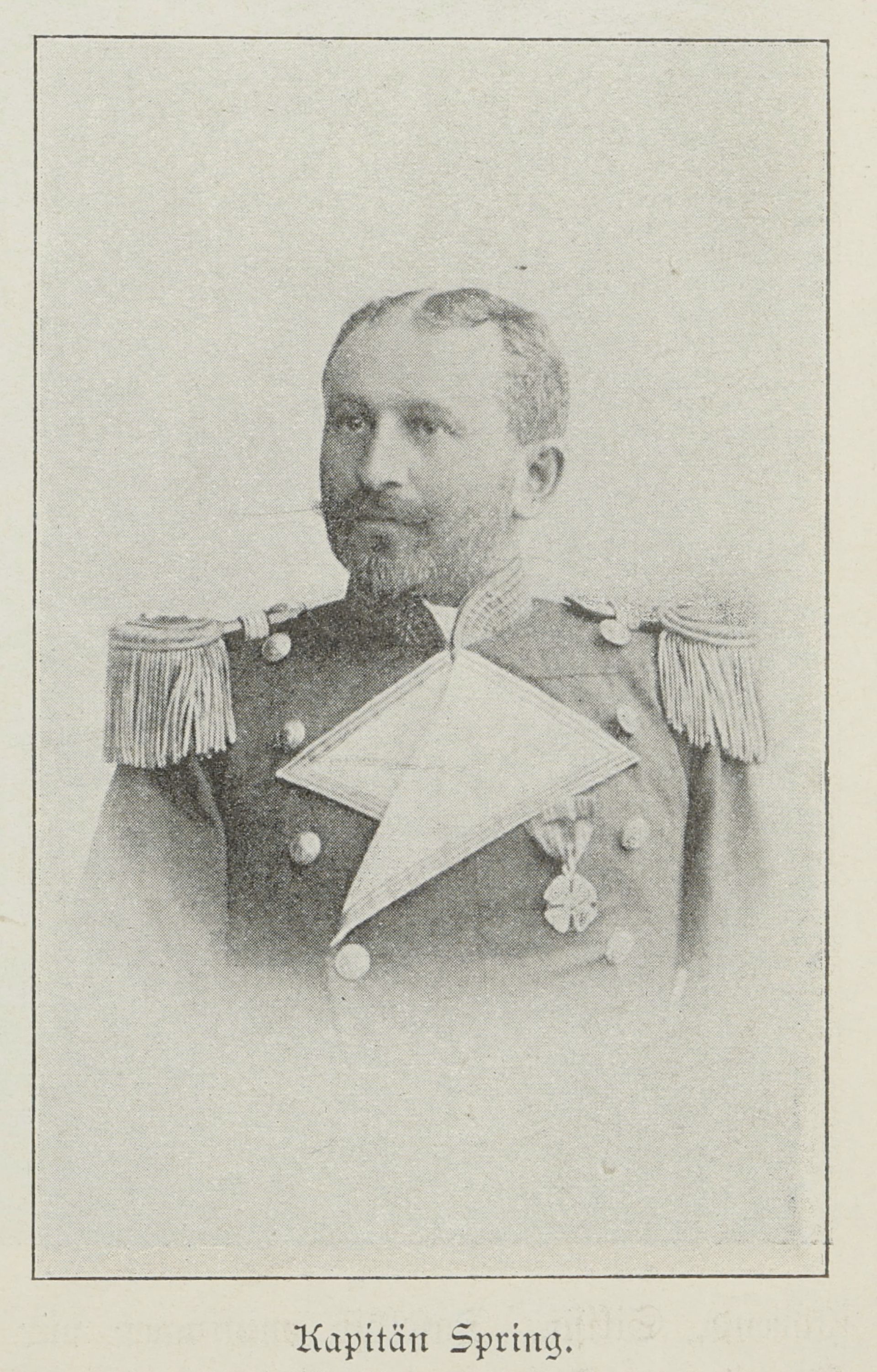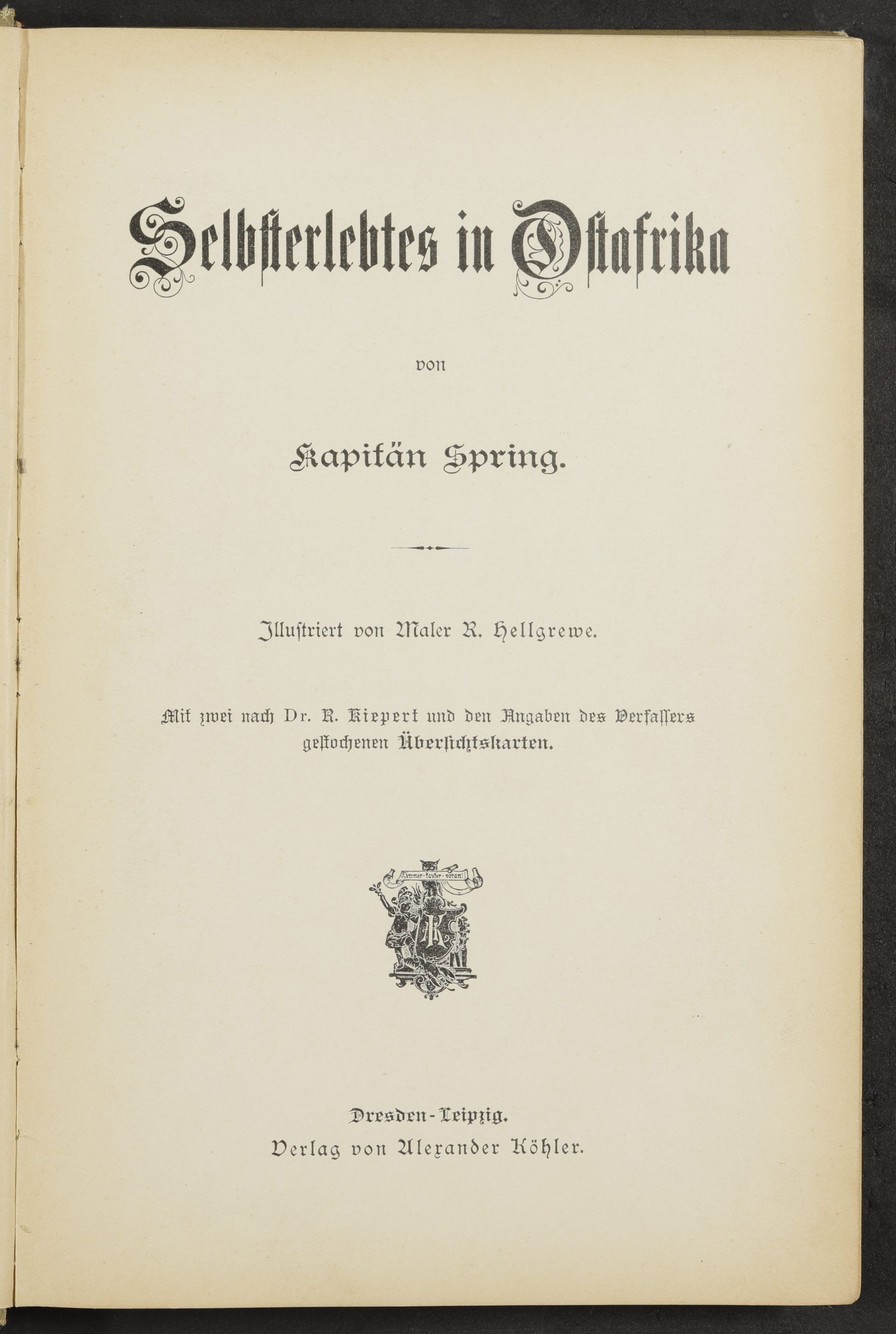The objects were given by Spring to Grand-Duke Adolphe with the help of Paul Eyschen, the Minister of State. They found their way to the collections of the Section Historique which had the aim of creating a small ethnographic museum complementing the historical collections of Luxembourg. The curator of the Section Historique, Nicolas van Werveke, mentions these objects for the first time in his yearly report of 1896, which confirms that they must have arrived in Luxembourg by 1896. He made a detailed inventory two years later, probably according to the information provided by Albert Spring. He mentions, for the most part, lances, javelins and other traditional weapons. He also lists civil objects such as drums, rattles, chairs, mats, charms, vases, snuffboxes, etc. The names of the people and the locations mentioned in the inventory as drafted by van Werveke indicated that the objects originated from East and Central Africa. They correspond to the regions that Spring travelled through in 1892-1893.
Looted Objects: The Albert Spring Collection
Looted Objects: The Albert Spring Collection
In 1896, a man called Albert Spring donated a group of objects to the Section Historique. These objects came from German East Africa (Deutsch Ostafrika – now Tanzania). Collected between 1892 and 1893, these objects were sent to Europe during the colonial conquest and are thus considered to have been acquired under problematic circumstances. The MNAHA has repeatedly contacted, with the support of the Ministry of Culture, the National Museum of Dar-es-Salaam to inform our colleagues about this collection and to show our desire to collaborate on common projects, including a potential restitution.
Short biography of Albert Spring
We do not know why Albert Spring gave these objects to Grand-Duke Adolphe of Luxembourg even though he later made several donations to German museums (for instance in Berlin and Stuttgart). Albert Spring was born in 1861 in Neuwied (DE) and died in Berlin in 1917. He became captain of the merchant navy and does not seem to have ever lived in Luxembourg, nor to have had any family ties in the Grand-Duchy.
Spring was an active colonialist: other than his 1892-1893 trip in German East Africa, he made an exploratory trip to German Cameroon from 1886-1887, he worked for a trading company in Portuguese Mozambique in 1893 to which he returned in 1909 to document the flora and fauna and most likely to organize hunts for European travelers. During his long stays in Europe, he partook in several conferences for scientific societies and the general public in order to popularize colonialist ideas. All of his trips to Africa took place at a time when the European domination of the continent was still being established. The power dynamics between Europeans and Africans were extremely violent.
 Albert Spring
Albert Spring
The Section Historique’s acquisition of the Spring Collection in 1896
Albert Spring's collection
The sources indicate that Spring acquired the majority of the objects that are currently at the MNAHA during his trip in German East Africa from 1892-1893. Even though Spring indicates in his memoirs that some objects had been “given” to him by this or that African “Sultan”, the timing of his trips corresponds to that of the violent establishment of German domination in that region. While the objects identified as having come from people that were friends with the Germans could be considered to be gifts, the ones coming from the colonizers’ enemies can be assumed to have been acquired through violent means, such as the objects presented below.
 Albert Spring
Albert Spring
 Albert Spring
Albert Spring
Nyamwezi objects
On June 4th 1892, Spring, who was then posted in Tabora, was ordered by the German military resident to help him fight Chief Isike d’Unyanyembe (called Sikki by the Germans). Isike was one of the great chiefs of the Nyamwezi people and the Germans faulted him for regularly attacking their caravans. In his report of the events of 1892, the German resident Schwesinger shows that Isike successfully mobilized chiefs from several surrounding regions, which could completely isolate the Germans in Tabora.
During their attack in the evening of June 4th 1892, the Germans managed to enter the fortified complex that Isike had built in the city of Tabora. However, they were only able to take bounty and were incapable of capturing or killing the Sultan and his court. Contrary to what was communicated in the German press of the time, the German assault was therefore a failure. When the German troops were joined by Lieutenant Ludwig Mayer a few days later, they decided to attack, destroy, and burn multiple near-by villages that had pledged allegiance to the Sultan, rather than to attempt a second assault on Isike’s residence. It is highly probable that part of the Nyamwezi objects that are currently in Luxembourg were looted at that time. In fact, Spring mentions his active participation in these raids in his memoirs.
These are the “Sacred Lance of Sultan Sicki de Tabora” and the “War Drum of Sultan Sicki de Tabora” (van Werveke's spelling). The descriptions in van Werveke’s inventory allows us to relatively confidently attribute these two objects to the capture of Isike’s residence. They are thus to be considered war bounty. This conclusion holds even if the drum that currently resides in the MNAHA probably belonged to one of Isike’s dignitaries rather than to the Sultan himself.
Mwinyi Mtwana’s ring
On June 1st 1893, the Luxemburger Wort reproduced a letter written by the wife of a German officer stationed in Africa. It describes a punitive expedition against villagers who may have attacked a German caravan. Unable to find the chief of the village, they killed one of his allies along with the latter's wife and father. The chief who was executed by the Germans was called Mninitwana (or Mwinyi Mtwana, according to the most common spelling found in the scientific literature). This former merchant had fled his home region by the coast due to his inability to pay off his debts. He went to trade and fight farther in-land and allied with the Sultan of Zanzibar. He swore to protect the commercial caravans of the Arabs and became the undisputed chief of the region around the village of Mdaburu. However, as early as the 1880s, Chief Mwinyi Mtwana emancipated himself from Zanzibar's tutelage and began to collect passage rights for his own benefit, first from Arab caravans who then chose other routes to avoid Mdaburu, and then also from Europeans, whom he continued to welcome in a friendly manner. Having allied himself with the Hehe who were fighting against the Germans around 1891, Mwinyi Mtwana and his son—whose men raided all the caravans which were traveling in the area—had become targets for the Germans.
The opportunity to attack arose when Spring passed through the area on his way back to the coast. Under the military command of officers Tom von Prince and Alfred Sigl, the Germans and their allies reached Mdaburu in the middle of the night of March 10th to 11th, 1893. Their troops consisted of five European officers and 126 askaris from the regular German army (Schutztruppe), supported by Spring and his 24 African mercenaries, who were joined by around a hundred warriors hastily recruited from the surrounding area. They launched the attack on Mwiniy Mtwana's camp at around 3 a.m., while the village was asleep. The Hehe fighters and Mwiniy Mtwana's guard were quickly defeated. One by one, the village huts were systematically burned, forcing the occupants to leave and give themselves up as prisoners. In one of the first huts destroyed, the Germans captured the Sultan and his father.
According to Spring, the attack ended by 8 a.m., and the Germans first took the time to inspect the rich bounty they had amassed in the center of the village: rifles, a small cannon, a Mauser pistol looted from a German caravan, the flag of Mwiniy Mtwana, jewelry and Hehe shields - some of which are now at the MNAHA. The German officers then declared the Sultan and his father guilty and condemned them to death by gunshot, a sentence which was carried out immediately.
Conclusion
Considering the above information, it is certain that the objects associated with Mdaburu and Mwinyi Mtwana as mentioned in Nicolas van Werveke's inventory were looted after the execution of prisoners of war by Spring and his companions. Similarly, there is a very high probability that the spears and shields attributed by van Werveke to the Gogo (Wagogo) and Hehe (Wahehe) people were also, at least in part, acquired during the attack on the Mwinyi Mtwana camp.
Spoils of the German colonial wars thus found their way to Luxembourg. As indicated at the beginning of this text, Luxembourg is now fully prepared to restitute all of these objects.
Text | CC BY-NC | Régis Moes, MNAHA
Sources
Report of the Secretary-curator, Publications de la Société historique (PSH), Volume XLV, 1896.
Descriptive catalogue of Spring's ethnographic collection in Report of the Secretary-curator, Publications de la Société historique (PSH), Volume XLVI, 1898.
Travelogue by Spring Albert, Selbsterlebtes in Ostafrika, Dresde et Leipzig, Köhler, 1896. (Luxembourg Library Catalogue)
'Verschiedene Nachrichten'. In: Luxemburger Wort, 1893. Jg., nº 152 (01.06.1893). [Digitised by the National Library of Luxembourg]. (full text, last retrieved: 01.07.2024)
Benett, Norman R., 'Mwinyi Mtwana and the Sultan of Zanzibar', in: Benett, Norman R., Studies in East African History, Boston, Boston University Press, 1963.
Benett, Norman R., 'Arab versus European'. Diplomacy and War in the nineteenth-century East Central Africa, New York, Africana Publishing Company, 1986.
Publication date: September 28th, 2023
Last update: July 1st, 2024

